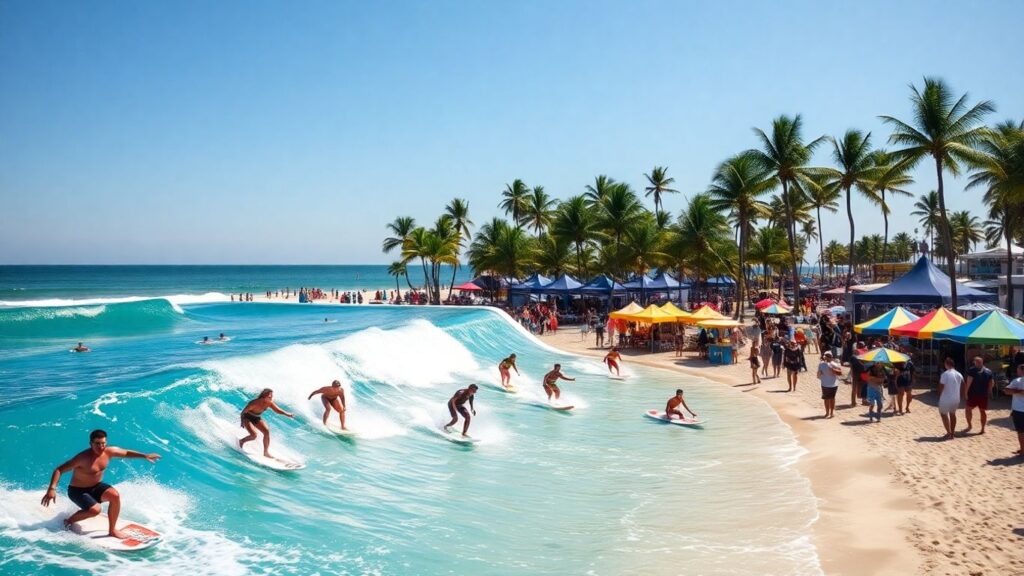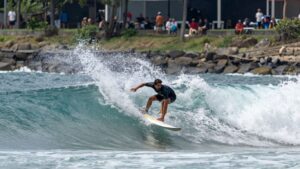California and Florida are making bold moves in the world of surfing, both investing heavily in surf park developments and hosting prestigious surf events. While these initiatives ride the growing wave of surf culture, they also present unique economic, environmental, and social implications for both coasts.
Key Takeaways
- Surf parks are a booming industry, with the US catching up to global trends.
- Both states are balancing traditional surf heritage with innovative recreation and tourism projects.
- Major festivals and surf competitions continue to support advocacy and community engagement.
California’s Surf Park Boom
In California, surf parks have transitioned from niche attractions to billion-dollar investments. Developers are launching new projects from Los Angeles to Sacramento, leveraging advanced wave pool technology to offer the perfect ride far from the ocean. Existing successes like the Palm Springs Surf Club—complete with high-end amenities—demonstrate the lifestyle appeal for surfers and non-surfers alike.
The business models behind these parks often pair surfing with broader resort-like experiences, including restaurants, retail, and wellness centers. Some are even hubs for professional competitions, attracting global talent while generating significant tourism revenue. Despite rapid growth—289% since 2020—debates persist over environmental impact, cost, and the parks’ long-term sustainability.
Florida’s Festival Spirit and Wave Preservation
Florida may lack California’s surf park density, but it maintains its foundational surf culture through events like the National Kidney Foundation Surf Festival in Cocoa Beach. Marking its 40th edition, this classic festival blends athletic prowess with charity—a testament to the perseverance of local surf legends and thousands of kidney transplant patients it supports. With Kelly Slater’s roots tracing back to such competitions, Florida’s events foster community and spotlight advocacy on health and the environment.
Florida also provides a cautionary tale in wave preservation. The famous First Peak at Sebastian Inlet—once an incubator for champions—was accidentally altered by infrastructure changes, illustrating the need to balance development with conservation. Local voices are now calling for dialogue in future planning, aiming to safeguard both natural and artificial surf spaces.
Surf Parks and the Future Experience Economy
Across both states, the growing popularity of surf parks mirrors broader social trends: Millennials and Gen-Zers are favoring unique, shareable experiences over traditional recreation. Mixed-use developments increasingly integrate surf lagoons, aiming for lasting engagement beyond one-time visits. Operators are continuously adapting, introducing tiered membership models and special events to build dedicated communities accessible to all skill levels.
Looking Ahead: Sustainable Waves
Both California and Florida sit at the forefront of surfing innovation and celebration. While surf parks reshape access to the sport and festivals preserve its rich heritage, the future hinges on finding a sustainable balance between economic growth, environmental consciousness, and community interests. As technology and interest continue to surge, these coastal leaders are set to define the next era of American surfing.
References
- A new Calif. industry has experienced 289% growth. But is it a bubble?, Yahoo.
- Riding the Wave: Surf Parks Reach a Critical Growth Stage, Aquatics International -.
- What to know ahead of 40th annual National Kidney Foundation Surf Festival, Florida Today.
- The Rise and Fall of First Peak, Sebastian Inlet, Surfline.








